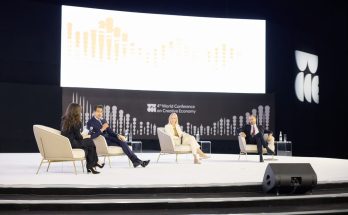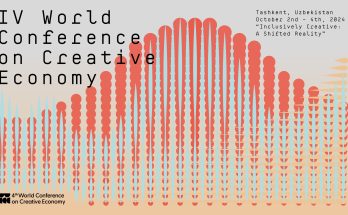 The conversation about internet governance has started making headlines in India over the past few months. Much of this can be traced back to the documents leaked by Edward Snowden, that broke the controversial news that US government had used top internet service providers and even content providers to carry out surveillance across the world. The same country, which had been extoling the virtues of the right to privacy among many other freedoms, had been caught abusing the trust of both its own citizens and of other countries across the world. Reactions were very sharp. German chancellor, Angel Merkel, livid that the Americans had been listening in on her conversations had even proposed building a secure European network as a reaction to US spying. Similarly, Brazil’s President Dilma Rousseff, announced that the country would host its on internet conference in April 2014, as a reaction to ’massive US electronic spying on its territory.’
The conversation about internet governance has started making headlines in India over the past few months. Much of this can be traced back to the documents leaked by Edward Snowden, that broke the controversial news that US government had used top internet service providers and even content providers to carry out surveillance across the world. The same country, which had been extoling the virtues of the right to privacy among many other freedoms, had been caught abusing the trust of both its own citizens and of other countries across the world. Reactions were very sharp. German chancellor, Angel Merkel, livid that the Americans had been listening in on her conversations had even proposed building a secure European network as a reaction to US spying. Similarly, Brazil’s President Dilma Rousseff, announced that the country would host its on internet conference in April 2014, as a reaction to ’massive US electronic spying on its territory.’
In a run up to the conference in Brazil – now known as Netmundial – the body that assigns internetdomain names, ICANN (Internet Corporation for Assigned Names and Numbers), which till recently had been under the U.S. Commerce Department’s National Telecommunications and Information Administration (NTIA) made a big, although expected, announcement. The US was ready to give up control of ICANN and hand over its running to a multistakeholder model, which essentially means that in the new mechanism, all stakeholders of the global internet community will sit together to deliberate the future of any ICANN decisions once the transition is complete. When multistakeholderism in internet governance emerged, during the UN-led World Summit on Information Society in Tunis in 2005, the main reason was that governments pushed observers out of the rooms during certain talks, and civil society and business felt that especially when it came to a resource as open as the internet, as users they had a say in its development. At the time, multistakeholderism seemed like a novel “bottom up” type of governance, especially suited to the internet which has more than one stakeholder vested in its development. However, today, almost a decade later, many governments are wary of allowing business and civil society an equal seat at international negotiations, as this would mean that these groups could bind together out overpower certain state interests, for commercial or other purposes.
This includes India, which would rather have a government-led body at the international level. In fact, in 2011, India proposed a United Nations-led body to deliberate on internet issues in the international fora, an idea that was vehemently rejected by many civil society and business activists in India. The government has not changed its stance today, however, it is willing to give up its idea for a UN led body, but instead, does call for a government-led body at the international level.
A peek inside the government of India’s submission to Netmundial sheds light on the reasoning behind this move. Drafted by the Ministry of External affairs (perhaps putting internet governance squarely in the foreign policy domain now), it makes a few points, including:
• Governance of the Internet is quite complex and involves range of issues of varied nature such as technical, legal, public policy, equitable access, privacy and security of the infrastructure and information. Given that the core infrastructure of the Internet is not protected by any international legal regime, it is important to shape a globally acceptable legal regime to maintain the openness, security and international trust in the Internet.
• The management of Internet encompasses both technical and public policy issues and should involve all stakeholders and relevant intergovernmental and international organisations. Policy authority for Internet-related public policy issues is the sovereign right of states.
Therefore, there can be no doubt, that unlike the US government’s position, the Indian government has not given a nod to multistakeholderism as the international mechanism for governing the internet. This is especially pertinent if internet governance negotiations are going to be added to the foreign policy bouquet of the Indian government.
There are many reasons for the differing positions. In a paper looking forward to the mechanics of the Brazil conference – using multistakeholder process – Professor Milton Mueller puts these differing positions in historical context pitting the government-led camp as “state actors who take a national sovereignty- oriented approach to global Internet governance. It includes a large number of developing countries as well as the large emerging economies such as China, Russia, Brazil and South Africa? These countries tend to be critical of US global hegemony and unenthusiastic, at best, about the so-called multistakeholder or private sector-led Internet governance institutions, which they see as creatures of the US.” The other group, Mueller writes, is “civil society and the private sector? roughly allied in their support for what they call “the multistakeholder model” (MSM). MSM refers to the native Internet governance institutions that are generally private sector nonprofits. The private sector contains representatives of the Internet technical community, including the Internet governance institutions themselves (ICANN, Regional Internet Registries, the IETF, W3C and the Internet Society), and multinational Internet and telecommunication businesses such as AT&T, Verizon, Google, Facebook and Microsoft. European states, Japan, and of course the U.S. government are, for the most part, in this camp.”
In fact, according to reports, it can well be expected that the proceedings at Netmundial – using a multistakeholder process – will be a test to how that kind of system would even work. One of the main reasons for governments rejected multistakeholder (MSM) processes has been legitimacy. Popularly, according to MSM – ’everyone gets a seat at the table.’ However, reports from Brazil have indicated that designing a system to ensure equal participation for all at Netmundial has been very tough, given the number of participants.
Back in India, it is certainly not the case that multistakeholderism has been rejected in its entirety. The government believes in multistakeholderism at home, and multilateralism abroad. Many groups have been formed to deliberate on these issues, and Indian civil society and business routinely hold talks and submit reports to the Indian government on their positions regarding various facets on cyber governance and security. In what might be a healthy sign, and quite indicative of Indian democracy, different groups within the internet governance space are already jostling for pride of place in international discussions. This is a far cry from what seemed to be two broad camps in Indian civil society discussions: those that agreed with the government’s view of government-led unilateralism, and those that promoted the multilateral way. Informally, the government of India has made it clear that it believes the civil society and business groups representing ’Indians’ are not yet a diverse group and not representative of the larger country. To that end, it must be kept in mind by the government that they might not like everyone sitting at the table, or what they represent, however, that itself is the whole point of a multistakeholder approach. Indian society is only just adjusting to the online experience and in the coming years, one can expect more groups to emerge, making discussions on internet governance even more contested than what they are today.
In the end, India’s growing digital economy, its frequent law and order problems because of tensions in its diverse polity that the government maintains is fuelled by unchecked social media, and its goal to connect a billion people to the internet at a variety of price points are only some of the reasons the Indian state has chosen to espouse a state-led mechanism for internet governance. However, at the same time, one must remember that it is civil society and media outrage that led the Indian government to ensure the IT Act, 2000 (including the infamous section 66a) is not easily abused, and businesses including the US-owned Google that released transparency reports that help people understand the behind-the-scenes workings of the government. All actors have their place at the table, be it at the state or international level. It is not a satisfying meal without them there.
(Mahima Kaul is a Fellow at Observer Research Foundation, Delhi)
Courtesy: ORF
Author Profile
- India Writes Network (www.indiawrites.org) is an emerging think tank and a media-publishing company focused on international affairs & the India Story. Centre for Global India Insights is the research arm of India Writes Network. To subscribe to India and the World, write to editor@indiawrites.org. A venture of TGII Media Private Limited, a leading media, publishing and consultancy company, IWN has carved a niche for balanced and exhaustive reporting and analysis of international affairs. Eminent personalities, politicians, diplomats, authors, strategy gurus and news-makers have contributed to India Writes Network, as also “India and the World,” a magazine focused on global affairs.
Latest entries
 DiplomacyOctober 4, 2025UNGA Resolution 2758 Must Not Be Distorted, One-China Principle Brooks No Challenge
DiplomacyOctober 4, 2025UNGA Resolution 2758 Must Not Be Distorted, One-China Principle Brooks No Challenge India and the WorldJuly 26, 2025MPs, diplomats laud Operation Sindoor, call for national unity to combat Pakistan-sponsored terror
India and the WorldJuly 26, 2025MPs, diplomats laud Operation Sindoor, call for national unity to combat Pakistan-sponsored terror India and the WorldJuly 25, 2025When Fire Ends, Diplomacy Begins
India and the WorldJuly 25, 2025When Fire Ends, Diplomacy Begins India and the WorldJuly 16, 2025Operation Sindoor and its Aftermath: India’s Successful Diplomatic Outreach
India and the WorldJuly 16, 2025Operation Sindoor and its Aftermath: India’s Successful Diplomatic Outreach







